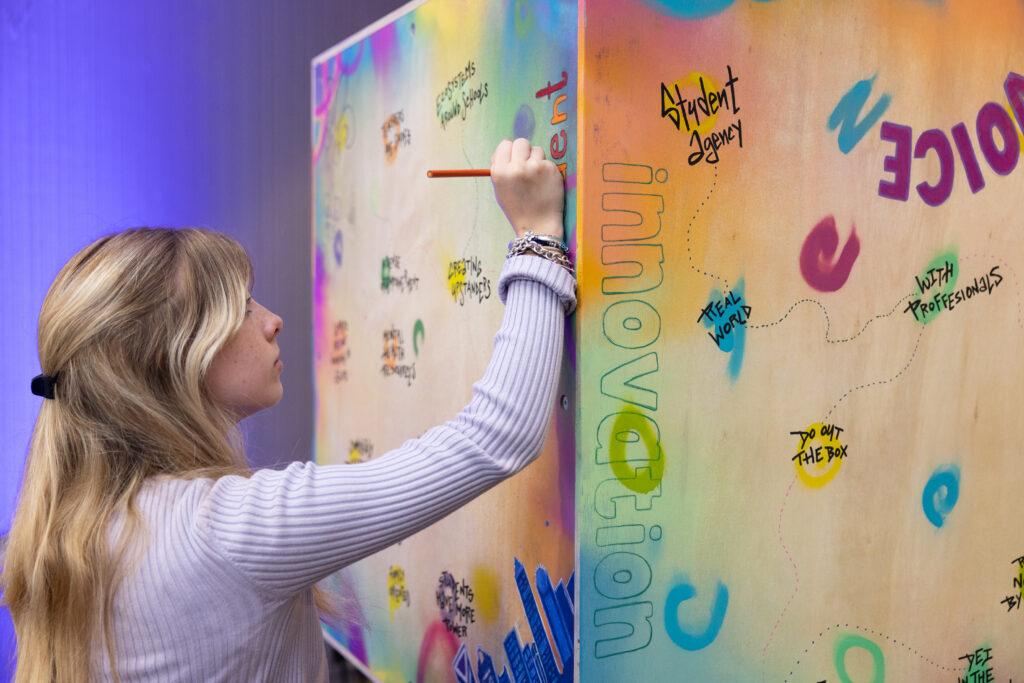 Now that I have recovered from the flurry of activity that took place at this year’s SXSWedu conference, I have started to reflect on what I hope to see at next year’s conference as well as what I personally would have done differently. I enjoyed hearing the latest on personalization, data analytics, game-based learning, and the Maker movement and was impressed with the passionate entrepreneurs who went through great lengths to pitch to me. However, I left the conference wishing I had built more connections with educators and school leaders.
Now that I have recovered from the flurry of activity that took place at this year’s SXSWedu conference, I have started to reflect on what I hope to see at next year’s conference as well as what I personally would have done differently. I enjoyed hearing the latest on personalization, data analytics, game-based learning, and the Maker movement and was impressed with the passionate entrepreneurs who went through great lengths to pitch to me. However, I left the conference wishing I had built more connections with educators and school leaders.
Although the Chronicle of Higher Education estimates that over 60% of SXSWedu attendees were educators, the newspaper shares my sentiments that the educator voice was missing and tensions divided entrepreneurs and educators. So how did this majority educator voice get lost? Well perhaps it wasn’t lost but instead siloed. Having different conference tracks made it easy to self-segregate and I found myself guilty of sticking to the “Entrepreneurialism and Business” track.
Sticking to this track meant that I missed Rebecca Mieliwocki’s, 2012 National Teacher of the Year’s, remarks on supercharging the teaching profession. I wasn’t the only one as the room was barely half full, leaving Rebecca hoping things are different next year:
“I left disappointed that there wasn’t a better interface between all these folks with great ideas, money and energy and the actual warm bodies, also filled with similar great ideas and energy, who teach children every day. Sigh. Maybe next year.”
While Rebecca struggled to attract an audience, the “Business Models that Work in Education Technology” panel had a ten minute wait to get in the room. Clearly developing a sound business model is top of mind for education technology entrepreneurs; yet empathizing with users (oftentimes educators) is a first step to developing a product that will gain significant traction. Although the panel of CEO’s, founders, and venture capitalists gave great advice, the perspective of educators and district leaders who purchase education technology products is invaluable. Unfortunately, as noted in this summary of edtech trends at SXSWedu educators and school administrators were scarce:
“Where are the districts? Where are the teachers? Aside from a few leaders of charter schools I’ve run into, most of whom were presenting, my impression is that there are few full-time educators here, let alone people who make IT purchasing decisions for school districts. Many sense a fundamental disconnect on both sides between the innovation conversation going on here and the real needs of teachers in classrooms. Hopefully that will change soon.”
In addition to increasing the educator presence on panels, I would love to see more educators as judges for the LaunchEDU competition where Clever took first in the K-12 category and SpeakingPal in the higher ed category. One idea is to have next year’s finalists present to a panel of educators, similar to Edsurge’s Teacher Tank.
Fortunately, the educator voice was elevated during Bill Gates’ Keynote when Diane Tavenner, former educator and CEO of Summit Prep, discussed how educators use the “Show Evidence” platform to get real-time feedback on student understanding. In the future, I believe more and more CEOs will be former educators as we are beginning to see a teacher-turned-entrepreneur trend in our portfolio with companies like NoRedInk, Gobstopper, and Learnzillion. We are also actively seeking teachers to become entrepreneurs through our inaugural Learning to Teach EIR Program in partnership with Teach for America.
So next year I plan to “get off track” to network with more educators, or maybe the educators will be so well integrated that it won’t matter and the budding entrepreneurs who pitch to me will be former educators themselves.


